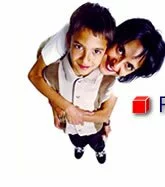 |
 |
 |
 |
||||||||||||||
 |
|||||||||||||||||
|
|
|
|
|
|
|
||||||||||||
|
|
|||||||||||||||||
|
Number of students |
Change in years when pre-test was two or more years below age |
Number of students |
Change in years when pre-test was below age |
||
|
fixv |
105 |
2.65 |
162 |
2.28 |
Processing Speed |
|
fixh |
71 |
2.86 |
162 |
2.13 |
Processing Speed |
|
trck |
116 |
4.26 |
147 |
4.17 |
Attention / Processing Speed |
|
wj3 |
45 |
2.51 |
139 |
1.81 |
Attention / Processing Speed |
|
rfrq |
147 |
3.00 |
181 |
3.10 |
Visual Processing / Memory |
|
visz |
69 |
3.18 |
160 |
2.85 |
Visual Processing (Visualization) |
|
cfu |
77 |
3.00 |
117 |
2.79 |
Visual Processing (Closure) |
|
efu |
53 |
3.82 |
123 |
2.93 |
Visual Processing (Manipulation) |
|
stvm |
64 |
3.47 |
142 |
3.26 |
Short Term Memory / Attention |
|
vmtr |
110 |
3.04 |
174 |
2.81 |
Visual - Motor |
|
logc |
39 |
4.67 |
108 |
3.64 |
Logic / Reasoning |
|
3.32 |
2.89 |
Overall years of improvement in processing and cognitive skills. | |||
|
1996 Combined average change on two
or more test when two years below age |
|||
|
3.684
|
Attention
|
||
|
3.162
|
Visual Processing
|
||
|
3.141
|
Memory
|
||
|
2.14 |
Processing Speed |
||
|
2.46 |
Attention |
||
|
2.87 |
Visual Processing |
||
|
3.78 |
Memory |
||
|
3.29 |
Auditory Processing |
||
|
PS = Processing Speed; SA = Selective Attention; RF = (letter) Reversal Frequency; FIXV= Calling out a vertical column of numbers (processing speed); FIXH = Calling out a horizontal row of numbers (processing speed); TRCK = Tracking a line with other lines present (processing speed and selective attention);WJ3 = Visual matching from the Woodcock-Johnson Cognitive Test Battery (processing speed); RFRQ = Reversal frequency test from Gardner |
|||
| Business Plan | How it Works | Testimonials | Contact us | FAQ | Home | |||